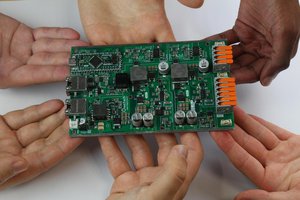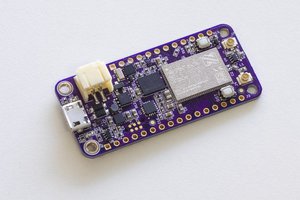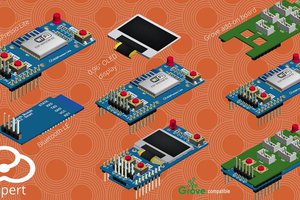Marvin: Now live on Kickstarter (Until December 3rd, 2016)
Marvin is a development board based on the Arduino Leonardo and is grove sensor compatible. We designed the board as a USB (2.4 mm thick pcb) so you can plug it in both your laptop and powerbank to configure / power your application. This means you don't have to keep an eye out for your micro usb cable all the time. It has the Microchip RN2483 as a LoRa module so you can send your data from anywhere outdoor in the Netherlands, and also other countries in the world that are rolling out LoRa networks. If you want to start with IoT with your organization any time soon, this is the ultimate tool to start off with.
Do I need to be a hardcore programmer to use Marvin?
No, even though you're working with a bit of code, you don't have to be a programmer to get it up and running. We've covered that for you in our step by step manuals.
Manuals?
Yes manuals, everything is open source, on Github and supported with examples. nice right? One of our partners in the Internet of Things Academy is IBM and brings the Bluemix platform to the table. Together with Node-RED, also an IBM creation, we'll show you step by step how to configure an online application where you can send your signal and process it in a database, website, dashboard or whatever you see fit!
Who is LoRa?
 Advantages of the LoRa network
Advantages of the LoRa networkLora stands for Long Range, Low Power. Its a very efficient, light weight way of communicating small messages wireless. Remember the old classic dial-up internet acces modems? Very inefficient, communicating back and forth, very slow. LoRa just asks to join the network with one message containing a unique identifier and if your device is registered in the network, you're good to go. The LoRa module is a hardware chip, that is most of the time sleeping, which means you save loads of power. If you compare this to for example the well known Wifi protocol, the module constantly needs to maintain the connection in order to send out one signal, so power is constantly consumed.
What is Marvin made of?
 Show me the goods
Show me the goodsMarvin is created with the intention to be plug and play. Therefore we choose a 2.4 mm pcb that fits right into any USB port of a laptop or powerbank. The functionality of the board resolves around the powerful Atmel 32u4 processor, the same that was used on the Arduino Leonardo board back in the day. This is a powerful chip that has on-board USB drivers and can be recognized by your computer as a peripheral like a mouse, keyboard etc. So if you really, really want to build things, you can go a long way with this board, even though its meant for simple things.
Want to take the next step from development to some real hardcore low power modes? Switch off everything and use a real time clock as a life line to continue measurements for years. We included it in our Marvin development kit, be sure to take a look!
In the beginning...
 Partners who sparked the idea of Marvin
Partners who sparked the idea of MarvinThe initial idea for Marvin sparked out of a plan written by Studio Wolfpack and RDM Makerspace after a request by the municipality of Rotterdam to come up with ideas that could inspire their "Roadmap Next Economy".
We developed Marvin at RDM Makerspace. Our philosophy is to make technique more accessible to everyone, and in particular to startups, creatives and entrepreneurs. This mindset stimulates innovation because everyone can have their own take on technology, resulting in a wide variety of possibilities for development. As founding partner of the Internet of Things Academy we created the Marvin board, to help people get started using some standardized chunks of technology, as a tool to start creating solutions to benefit their business and operations.
 The stages of development towards Marvin
The stages of development towards MarvinMarvin's younger brothers and sisters were developed over the course of the past year. It started out with the finding that many organizations have a hard time getting started with IoT. In our context from the Internet of Things Academy,...
Read more » Niels Stamhuis
Niels Stamhuis
 Jean Alinei
Jean Alinei
 Rishi
Rishi
 Jared
Jared
 Espert
Espert